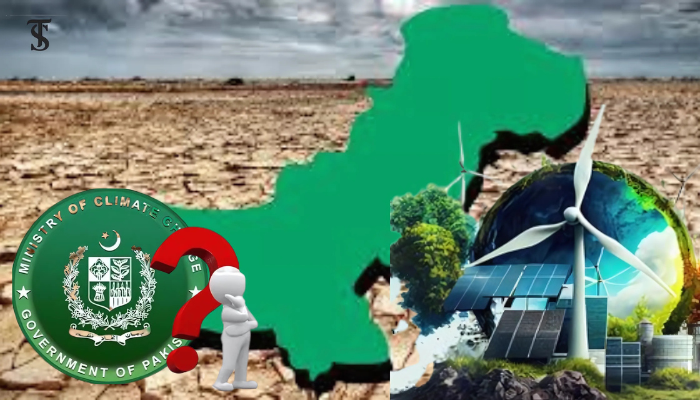The Cost of Climate Inaction in Pakistan

- Pakistan is the 5th most vulnerable country to climate change, facing severe impacts despite contributing only 0.93% to global emissions.
- Climate policies in Pakistan have been formulated but struggle with implementation and lack of adaptation to the country’s diverse climate zones.
- Immediate investment in awareness, green initiatives, and international support is crucial for mitigating future climate disasters and economic losses.
Climate change is an inevitable challenge to the whole world, a problem that has exceeded its boundaries and raised concerns for the future security of mankind, particularly in states like Pakistan. It is a threat that needs to be tackled first. According to the reports of the United Nations, Pakistan is the 5th most vulnerable country to climate challenges. Amid economic uncertainty, the incremental inflation rate, and the lack of resources, Pakistan is stranded between shifting priorities. Recent devastations in Pakistan, owing to climate catastrophes, call for immediate and effective policy plans so that the blow to infrastructure and life can be controlled.
Pakistan is blessed with natural landscapes, but this diversity brings divergent climate problems as it has witnessed a series of catastrophic floods and the speedy melting of glaciers. Unfortunately, a country like Pakistan only contributes 0.93% to global carbon emissions but faces detrimental effects. Since the flood of 2022, Pakistan has suffered an economic loss of over 30 billion USD and millions of climate-induced displacements. Climate challenges are expected to rise, both in numbers and severity as well. Ill-preparedness for the looming crises can deal unbearable damage to the brittle economy.
Though Pakistan has experienced climate change, initiatives to counter climate change are lagging. Pakistan gave its first national climate policy under the Ministry of Climate Change, Pakistan, back in 2012. The policy was well rounded but when it came to implementation ends, gaps were noticed. It had a policy implementation mechanism but desired results were not achieved. Another draft was presented in 2021 with extensive research and development but met with the same fate. The lack of enactment of climate policies is quite concerning to compare the number of climate policies of Pakistan to the climate vulnerability It is pertinent to mention that Pakistan has 11 climate zones with unique challenges and demanding a discrete policy framework, but unfortunately, specific policies for each zone have not been formulated yet.
Another key hindrance to the solvability of climate challenges in Pakistan is the lack of awareness among common people. Though the mantra of climate endurance has gained hype in recent times, developments and mass-scale awareness campaigns are needed to fight for survival. The government needs local support to make initiates prudent. According to the United Nations Development Program (UNDP), around 43% of young people from Pakistan have a sufficient understanding of climate challenges, so she can use this youth bulge in their favor and create inclusive policies that aim to mitigate climate effects.
The socio-economic condition of people makes them unfavorable for any climate-induced disaster. Water availability and disruption in glacial melting trends make circumstances dire for Pakistan.
The terms mitigation and adaptation are usually associated to counter climate change—the strategies by which countries exhibit preparedness for the threat. In the case of Pakistan, mitigation seems quite expensive as it requires advanced technologies and extensive financial withdrawals. The dwindling economy of Pakistan, along with battling other primary issues like poverty, education, and health, makes it difficult to spend on climate capacity building. On the other end of the spectrum, adaptation, to some extent, is easier with green initiatives and other plans. Therefore, Pakistan needs economic support from the international community and the Loss and Damage Fund to move towards climate recovery.
purposes.
Vulnerability to global warming and climate change is times high for Pakistan Being an agricultural country, society relies on crop production for domestic use and export purposes. Changes in weather patterns, coupled with floods and deteriorating soil quality, have left people stranded. It not only exacerbates their pain but affects the economy as a whole. The socio-economic condition of people makes them unfavorable for any climate-induced disaster. Water availability and disruption in glacial melting trends make circumstances dire for Pakistan.
Though Pakistan has responded effectively against the climate battle, much is needed to be done. Recent developments in Baluchistan and Gilgit Baltistan’s climate policy are a fair indication of the march toward victory. The government needs to invest in awareness campaigns and launch climate initiatives to cater to much-needed environmental action. Initiatives like 10 billion Tree Tsunamis can prove fruitful for climate mitigation. The government needs to engage multiple stakeholders and formulate extensive climate policy. Shifting towards renewable and green energy is crucial. Moreover, Pakistan needs to work on sustainable and climate-resilient infrastructure. The development of such a structure decreases the economic loss in a climate catastrophe. No doubt, climate change is today’s threat, and actions are needed to ensure the survival of mankind. The world needs to act swiftly to restore the environment before the damage becomes unrepairable and the cost of inaction is hard to pay.
Jawad Hassan
The writer is a student of Government and Public Policy at the National Defence University, Islamabad.






It¦s actually a great and helpful piece of information. I am glad that you just shared this useful info with us. Please keep us informed like this. Thank you for sharing.